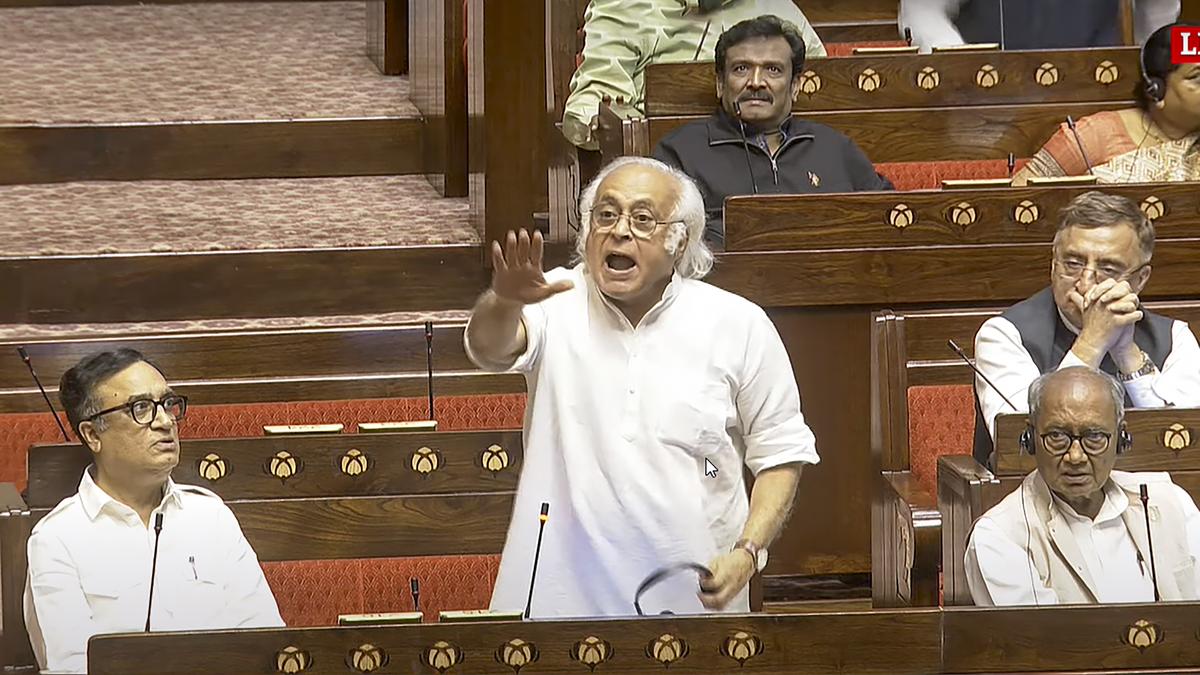
Jairam Ramesh writes to Vaishnaw to repeal ‘RTI-destroying amendment’
The Hindu
Jairam Ramesh criticizes amendment to RTI Act, urges IT minister to review and repeal changes made in 2005 legislation.
Senior Congress leader Jairam Ramesh on Sunday (April 13. 2025) said that deletion of the provision in the RTI Act that recognises citizens' right to information as being at par with that of legislators is "completely unwarranted", and urged IT minister Ashwini Vaishnaw to pause, review, and repeal the amendment made to the original legislation of 2005.
Ramesh's assertion came days after Vaishnaw responded to the Congress leader's earlier letter in which he had expressed concern over Section 44 (3) of the Digital Personal Data Protection (DPDP) Act 2023 which "prohibits" sharing personal information under the Right to Information Act 2005.
Mr. Vaishnaw had responded to Ramesh, saying that personal details that are subject to public disclosure under various laws will continue to be disclosed under the RTI Act after the implementation of the new data protection rule.
"Many thanks for your response dated April 10, 2025, to my letter of March 23, 2025, regarding the far-reaching amendment made to the RTI Act, 2005 through Section 44 (3) of the Digital Personal Data Protection (DPDP) Act, 2023.
"I now wish to make four points by way of a counter-response to your defence of the RTI-destroying amendment," Ramesh said in his letter to Vaishnaw on Sunday.
"First, Section 3 of the DPDP Act, 2023, cited in your letter as protecting disclosures under the RTI Act 2005, is wholly irrelevant since Section 8(1) of the RTI Act, 2005 itself has been amended drastically.
"Section 3 of the DPDP Act will now only protect disclosures as per the amended RTI Act, which exempts all personal information from being accessible," the Congress general secretary said.

World Bank team visits Mysuru, holds consultations with local authorities on infrastructure projects
World Bank officials consult with Mysuru authorities on ambitious projects including utilidors, city surveillance, and water supply efficiency.

When a wintering bird doubles back to its breeding grounds to attend to the visceral business of procreation, it becomes essentially “unreachable” for the human friends it has made in its wintering grounds. It is impossible to keep tabs on the bird. One only knows its vast breeding range, which could straddle countries. It would be easier to find a needle in a haystack than trace this bird. Birder Jithesh Babu is engaged in an exercise of this kind: he is trying to trace the address of a curlew sandpiper (he made friends with, on April 18, 2025 at Kelambakkam backwaters). Jithesh would likely succeed in this effort; he is not playing blind man’s buff. The curlew sandpiper (found in its breeding plumage and likely to be around in its wintering grounds for some more time) is wearing a tag. A bird with a tag usually has a recorded history to fall back on. In a couple of days, Jithesh is likely know where exactly the Curlew sandpiper would go. The tagged Curlew sandpiper having crossed his 150-600 mm telephoto lens, he has a photo of the creature, which he has sent to Bombay Natural History Society (BNHS) along with a request for information about it. And Jithesh knows what exactly to expect. Around the same time four years ago — April 21, 2021 — he found a tagged flimingo at Pallikaranai marshland and he wrote to BNHS seeking information, and in response, Tuhina Katti, a scientist with the Wetlands Programme, BNHS, wrote back to him: “From the combination on the tag, it appears to be ‘AAP’. This individual was tagged in Panje, Navi Mumbai (on the outskirts of Mumbai) on 24 September 2018. It was resighted in Chennai in August 2020 and since then it has been resighted in Sholinganallur on a couple more occasions. It is interesting that the bird was still present there in April.” Jithesh remarks: “As this happened at the height of the second wave of the COVID-19 pandemic, the response took some time. Usually, it is prompt with a turnaround time of just two days.”

 Run 3 Space | Play Space Running Game
Run 3 Space | Play Space Running Game Traffic Jam 3D | Online Racing Game
Traffic Jam 3D | Online Racing Game Duck Hunt | Play Old Classic Game
Duck Hunt | Play Old Classic Game









